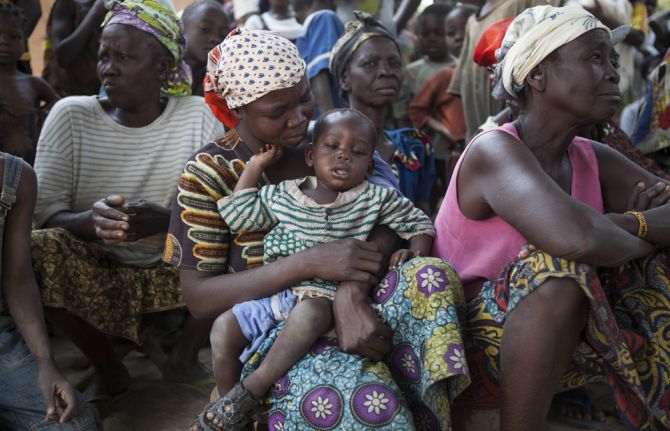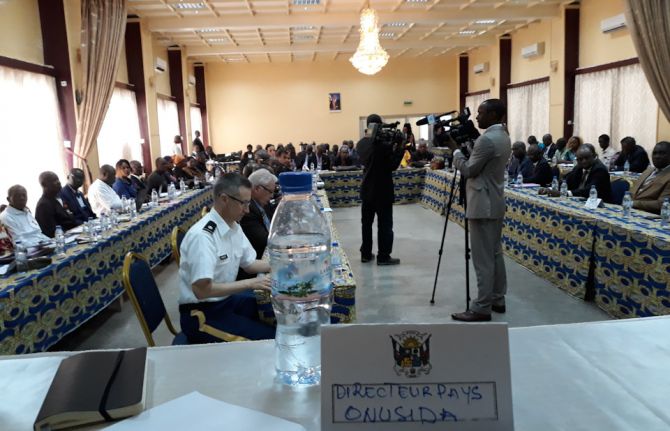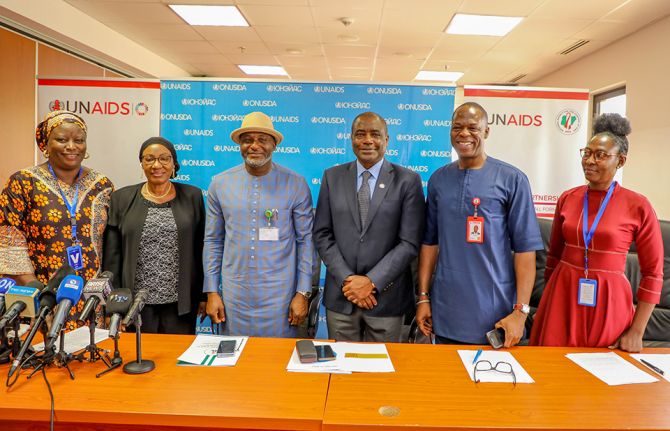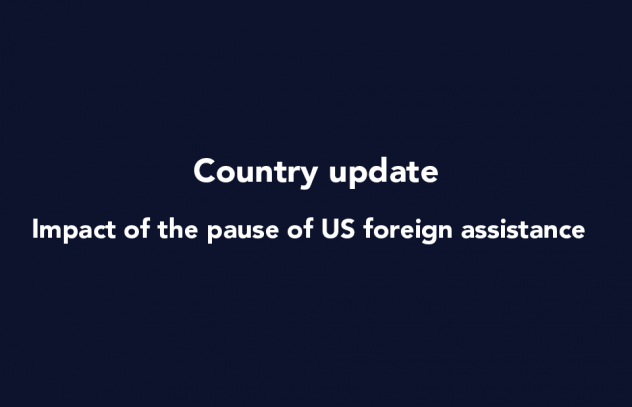


Feature Story
Progress, but still miles to go, to increase HIV prevention and treatment in Central African Republic
03 August 2018
03 August 2018 03 August 2018Some 18 months after the launch of the catch-up plan, the National AIDS Council (CNLS), the Ministry of Health and UNAIDS co-organized a workshop in Bangui, to take stock of the progress and the challenges to accelerate access to treatment for people living with HIV in the Central African Republic. The workshop also served as an opportunity to renew political commitment to the HIV response and to call for urgent action on prevention.
The Prime Minister of the Central African Republic, Simplice Mathieu Sarandji, opened the meeting with 80 stakeholders present, including members of government, civil society organisations, people living with HIV, members of key populations, as well as local governments, traditional and religious leaders.
Key areas of progress since the launch of the catch-up plan in January 2017 included the development of new policies to implement test and treat, and the increase in the number of people on HIV treatment from 25,000 in 2016 to 34,000 in June 2018. Community treatment groups have been delivering HIV treatment to people in remote and insecure regions such as the eastern town of Zemio. In addition, a community treatment observatory is helping monitor access to and quality of HIV care in Bangui.
However, there are miles to go. Less than 35% of people living with HIV in Central African Republic access treatment — this is among the lowest in sub-Saharan Africa. Challenges include an inadequate monitoring and evaluation system, a lack of effective supervision of facilities providing HIV services, limited community engagement to implement HIV testing and treatment, as well as limited financial commitments to reach treatment targets. Most agreed on the need to improve coordination.
As a result, participants identified priorities for the next six months to reach treatment targets for 2019. All stressed that communities, people living with HIV and key populations must be involved every step of the way. In addition, participants stressed the urgent need for increased domestic and donor funding.
A steering committee and technical working groups prepared the two-day workshop based on available data and on-the ground site visits. The groups included representatives from the Ministry of Health, CNLS, community organisations, people living with HIV, international NGOs such as Medécins Sans Frontières and the French Red Cross as well as UNICEF, UNFPA, WHO and UNAIDS.
Quotes
“Our country and government are committed to accelerating the pace of people accessing medicine and to reach the goal of zero new HIV infections. To ensure this, we will fund HIV treatment for an additional 5000 people in 2019. We will also rapidly develop a national HIV prevention plan.”
“It is time to go faster with our catch-up plan. We must change our approaches, build on progress and adapt when necessary to reach our goals. Our objective is to focus on the communities where people are most vulnerable to HIV infection and to provide them with effective services that respect human rights.”
“We will not put more people on treatment and reduce new HIV infections without involving us. Stigma and discrimination remain serious barriers to our efforts. This is why people living with HIV want to play an active role in encouraging HIV testing, prevention and treatment for all.”



